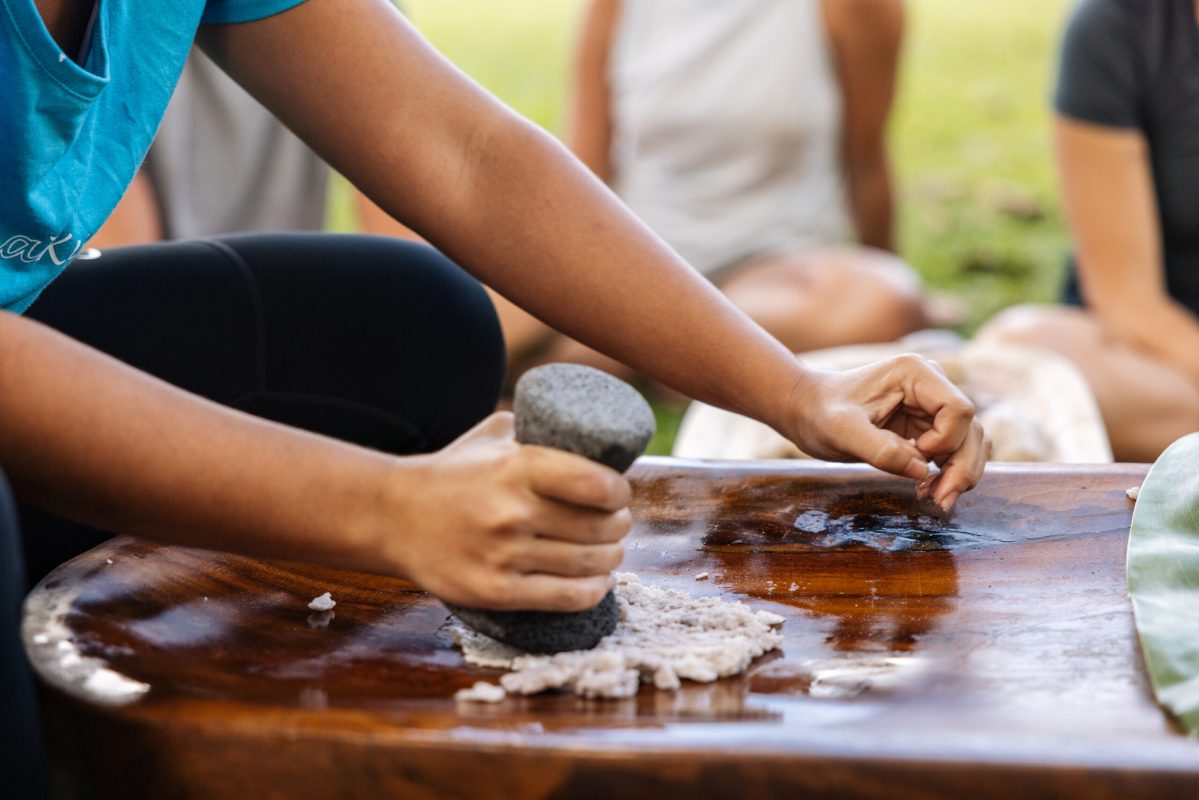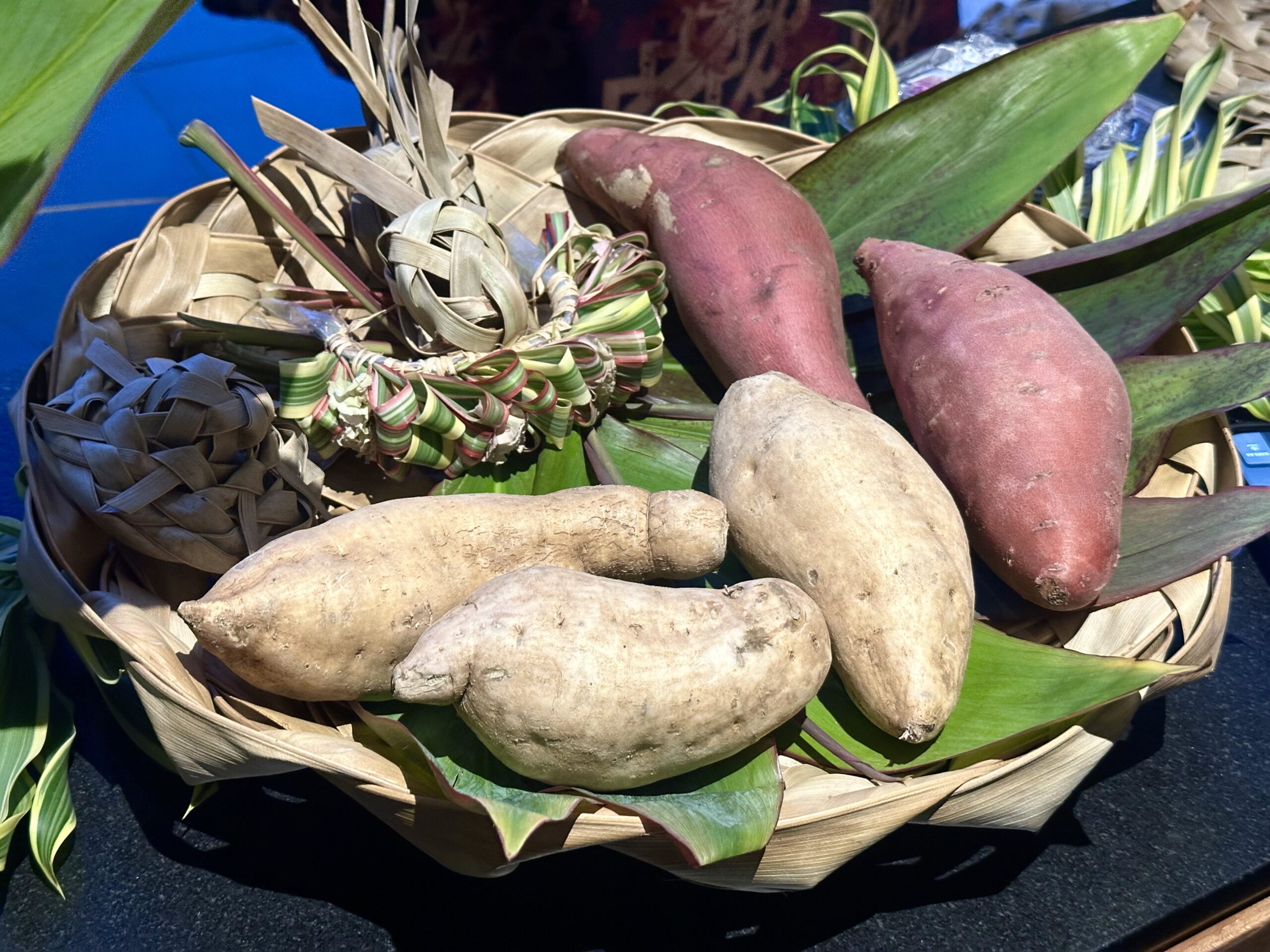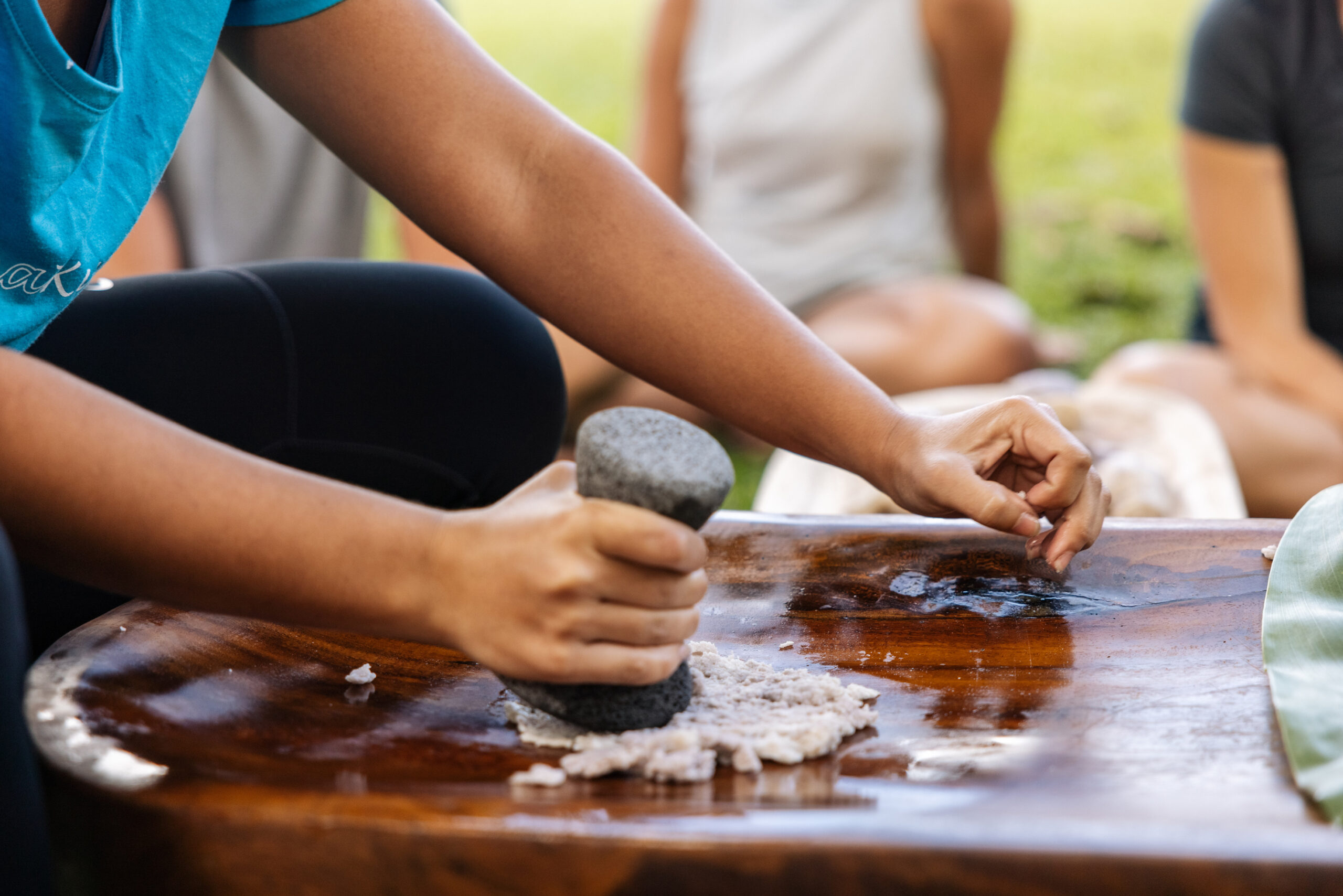
To make Hawaiian pa’i’ai or poi kalo (taro) is steamed and pounded with water. Courtesy of Hawaii Tourism Authority. Photograph by Heather Goodman.
This text accommodates affiliate hyperlinks.
Interested in conventional Hawaiian Meals? Whereas most guests consider shave ice, pineapple and musubi as Hawaiian meals, they aren’t. These got here tons of of years after Hawai’i used to be found by Polynesians settlers and are thought of “native meals,” versus Hawaiian. Even poke, as we all know it right now, was developed lengthy after Hawaiʻi turned part of the U.S.
What are Hawaiian canoe crops?
After we take into consideration conventional Hawaiian meals right now, we’re referring to “canoe crops” – staple meals that have been delivered to the Hawaiian Islands over 1000 years in the past by canoe – which embody components resembling kalo (taro), ʻulu (breadfruit), niu (coconut), maiʻa (banana), ʻuala (purple candy potato) and ʻōlena (turmeric) simply to call just a few.
Canoe crops have been extra than simply sustenance to Native Hawaiians. They have been used for clothes, shelter, drugs and rituals. ʻUlu is a logo of meals safety, whereas kalo – an important of the canoe crops – is taken into account the ancestor of all Hawaiian folks.
Though Native Hawaiians have grown these crops for hundreds of years, they aren’t all the time straightforward to search out in grocery shops or on restaurant menus. However in search of them out offers not solely the reward of studying extra about Hawaiian tradition, it’s additionally a chance to style one thing new and scrumptious.
Why Belief My Recommendation?
I’m not Native Hawaiian, nor am I a cultural practitioner. I’m a meals author and former chef who has been cooking and studying in regards to the meals of various cultures around the globe for nearly 30 years. The very first thing I did after I moved to Hawaiʻi 9 years in the past was begin a undertaking referred to as the “Yr of Substances” the place I chronicled a unique native Hawaiʻi ingredient every single day for a 12 months straight. In my analysis I realized the place to supply these components, how one can cook dinner them and what their medicinal advantages have been. Throughout that point, I started touring native farms, main farmers market excursions and internet hosting farm-to-table dinners on Oʻahu. Persevering with down the rabbit gap ultimately led me to volunteering commonly with ʻāina-based organizations, and farms, islandwide that develop conventional Hawaiian crops, and turning into an ʻulu ambassador for the Hawaiʻi ʻUlu Cooperative – an area non-profit I’ve written articles and guides for and developed recipes and merchandise for using canoe crops. Locals know me greatest as “The Wholesome Locavore” – my IG deal with and identify of my weblog – somebody who’s enthusiastic about private and environmental well being, native agriculture and supporting native companies. After 10 years of writing about meals and journey for publications nationwide, I nonetheless discover probably the most pleasure in writing in regards to the meals of Hawaiʻi.
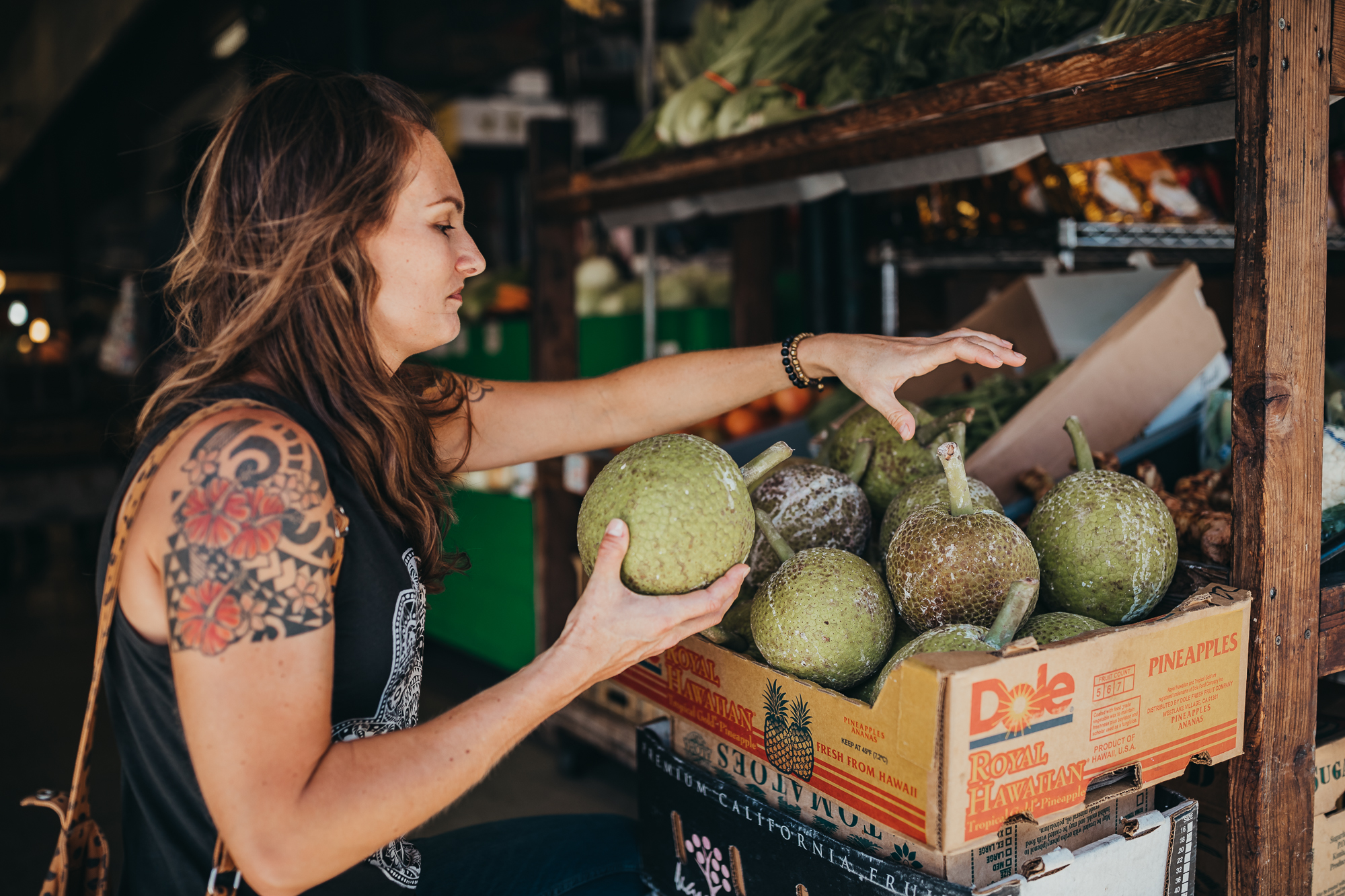
You will discover canoe crops like kalo and ʻulu at produce markets in Chinatown on Oʻahu. Photograph by Ketino Images.
The place can I study extra about Hawaiian canoe crops?
In case you are all in favour of studying extra about Hawaiian staple meals, there are a number of methods to go about it.
Study Earlier than You Style
- Cultural Facilities: Locations just like the Polynesian Cultural Center on Oʻahu and Maui Ocean Center on Maui supply an interactive approach to study Native Hawaiian historical past and tradition.
- Resort & Resort cultural applications: The Westin Maui Resort & Spa in Ka’anapali and the OUTRIGGER Kāʻanapali Seashore Resort each have sturdy cultural applications that may train you all it’s good to learn about canoe crops. Though these resorts are stand-outs they aren’t the one ones. For the previous 5 years, lodges and resorts throughout the state have been creating cultural applications to supply their visitors instructional experiences. When reserving your lodging, test to see if that is a part of its facilities.
- ʻĀina-based organizations: What higher approach to study meals than to see how it’s grown? At organizations resembling Kakoʻoʻoiwi, Mānoa Heritage Heart and Hoʻoulu ʻĀina (all on Oʻahu) you possibly can volunteer within the discipline studying historical Hawaiian farming practices.
- Museums: Historical past museums resembling The Bishop Museum on Oʻahu supply an in-depth have a look at Native Hawaiian life (pre-contact) together with the historical past of canoe crops and the way they have been ready.
Style Hawaiian Canoe Crops
Maui
Seascape Restaurant
Seascape is without doubt one of the few Hawaiʻi eating places utilizing canoe crops. Chef Enrique “Henry” Tariga is dedicated to serving a hyper-local, sustainable menu at his restaurant contained in the Maui Ocean Heart. He additionally hand-selects contemporary seafood caught by Māʻalaea Harbor fisherman and sources grass-fed meats from native ranches. Attempt the Kalo Poke Nachos, Upcountry ʻUlu Hummus, Truffle Kalo Fries, Maiʻa Creme Brulee and Mocha ʻUlu Pie.
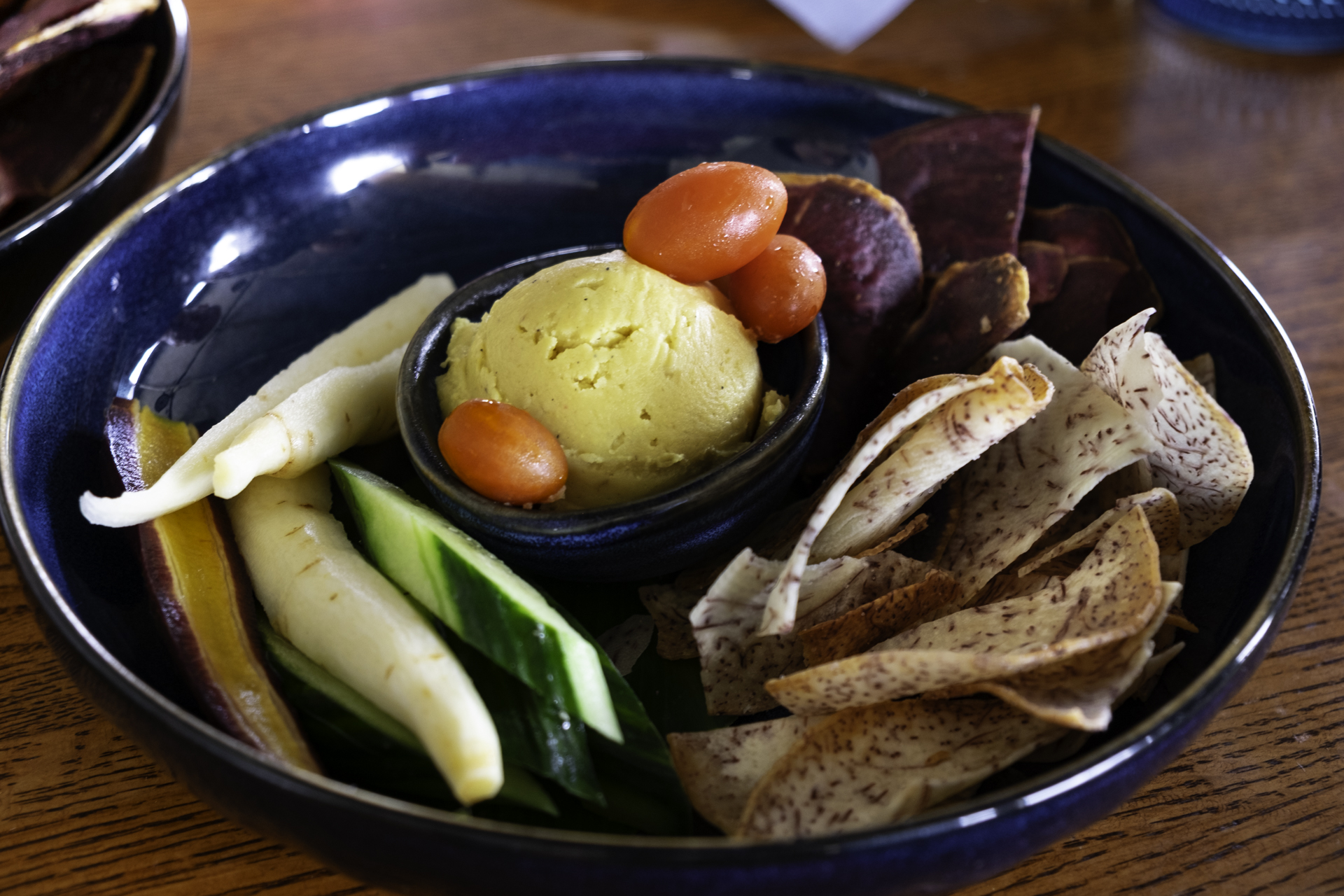
Home-made ‘ulu hummus with native greens and ‘uala and kalo chips at Seascape Restaurant. Photograph by Sarah Burchard.
ʻUlu Kitchen
Chef Peter Merriman has been serving farm-to-table delicacies in Hawaiʻi since he opened his first Merrimanʻs restaurant in 1988 on Hawaiʻi Island. He then went on to co-found the Hawaiʻi Regional Delicacies motion in 1991 with 11 different native cooks. Today, Merriman has an empire with stakes in each Merriman’s and Handcrafted Eating places (HCR). ʻUlu Kitchen, a part of HCR, is positioned at The Westin Maui Resort & Spa in Ka’anapali. Attempt the Coconut Corn Chowder (with ʻulu), Mushroom Pot Pie (with extra ʻulu!) and Maui Nui Venison.
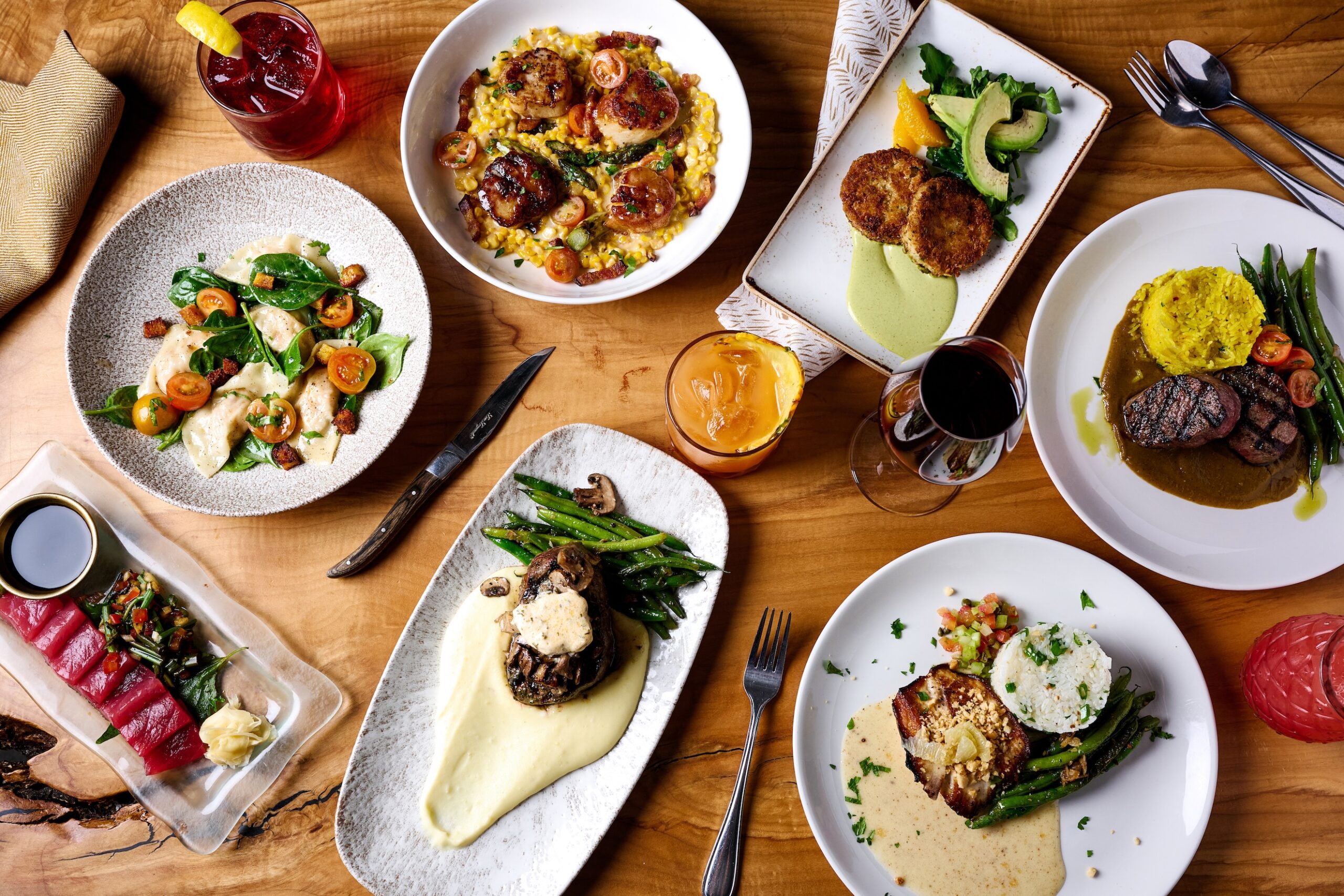
Chef Peter Merriman has been supporting Hawaiʻi farmers for over 30 years. Courtesy of ‘Ulu Kitchen. Photograph by Steve Czerniak.
ʻOkoʻa Farms (Retailer) – ʻOkoʻa Farms obtained so busy on the Upcountry farmers market, proprietor Ryan Earehart opened a retailer. Inside you’ll discover all kinds of produce, meats and eggs; value-added merchandise resembling contemporary pressed juices, floor spices, sourdough bread and many ready meals resembling cassava bowls with coconut milk, papaya and dragon fruit and taro pudding with guava. Subsequent 12 months, the shop might be increasing into the area subsequent door to create a cafeteria-style buffet for take-out.
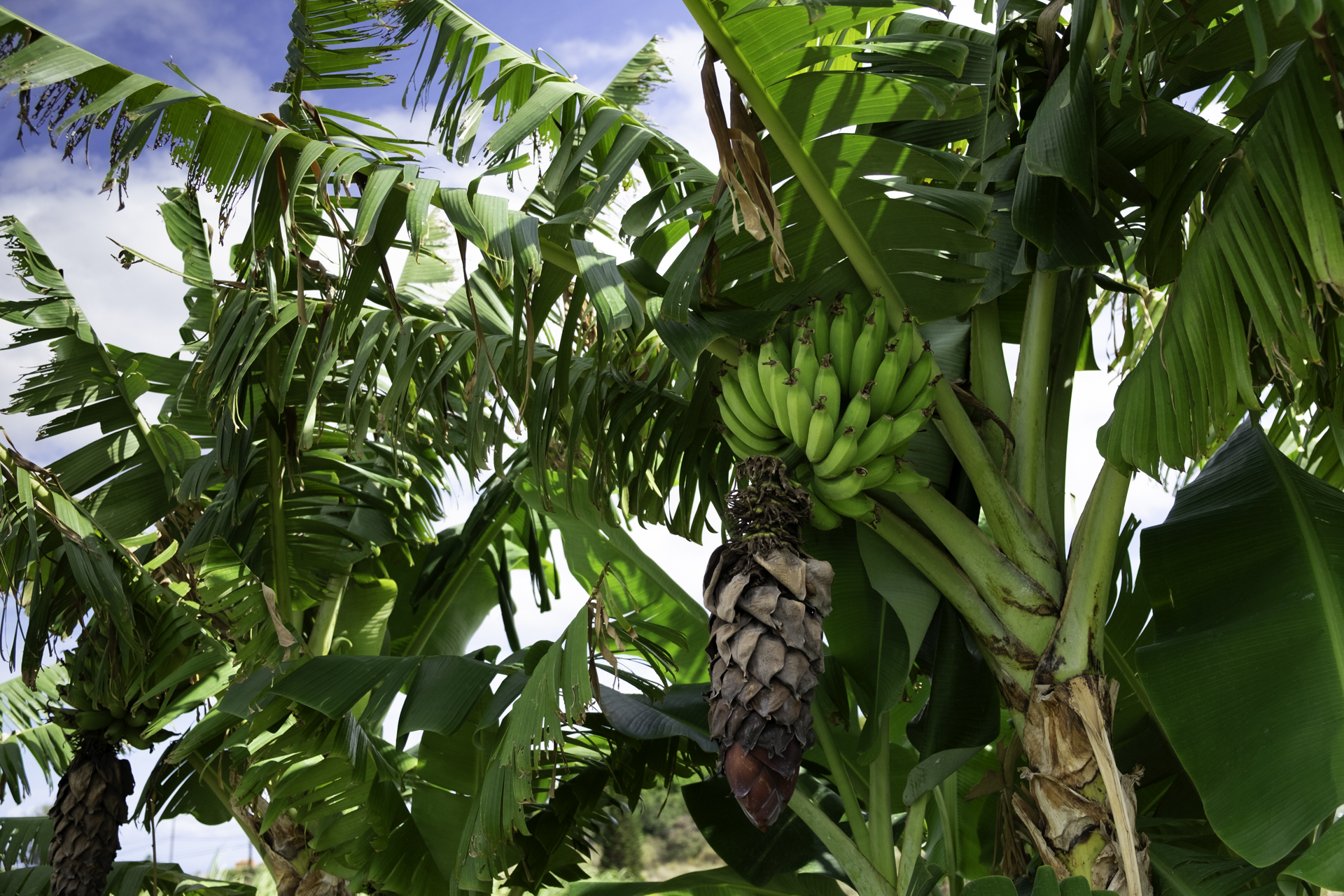
ʻOkoʻa Farms boasts considered one of largest kinds of crops on Maui, together with maiʻa (bananas proven right here). Photograph by Sarah Burchard
Oʻahu
Mud Hen Water – Proprietor Ed Kenneyʻs first Oʻahu restaurant City simply made Eater’s 38 Most Important and Influential Eating places within the Previous 20 Years listing. The respect is effectively deserved. Since 2005, Kenney has championed native farms on his menus, and Mud Hen Water, which opened in 2015, isn’t any completely different. “Mud Hen,” as locals name it, goes a step additional by incorporating conventional Hawaiian meals. Attempt the Pohole, Fried ʻUlu and Heʻe Lūʻau.
Fete – James Beard Award-winning chef and proprietor Robynne Maiʻi goes to nice lengths to include as many native components on her menu as doable, working with over 30 native farms, ranchers and specialty distributors. Eating at Fete, “French for celebration,” is a joyous affair. The service is enjoyable, the cocktails and wine listing are among the greatest on island and the bistro-style meals could have you craving extra. When it’s ʻulu season, attempt the Aloo ʻUlu. The Kulolo Ice Cream is a should.
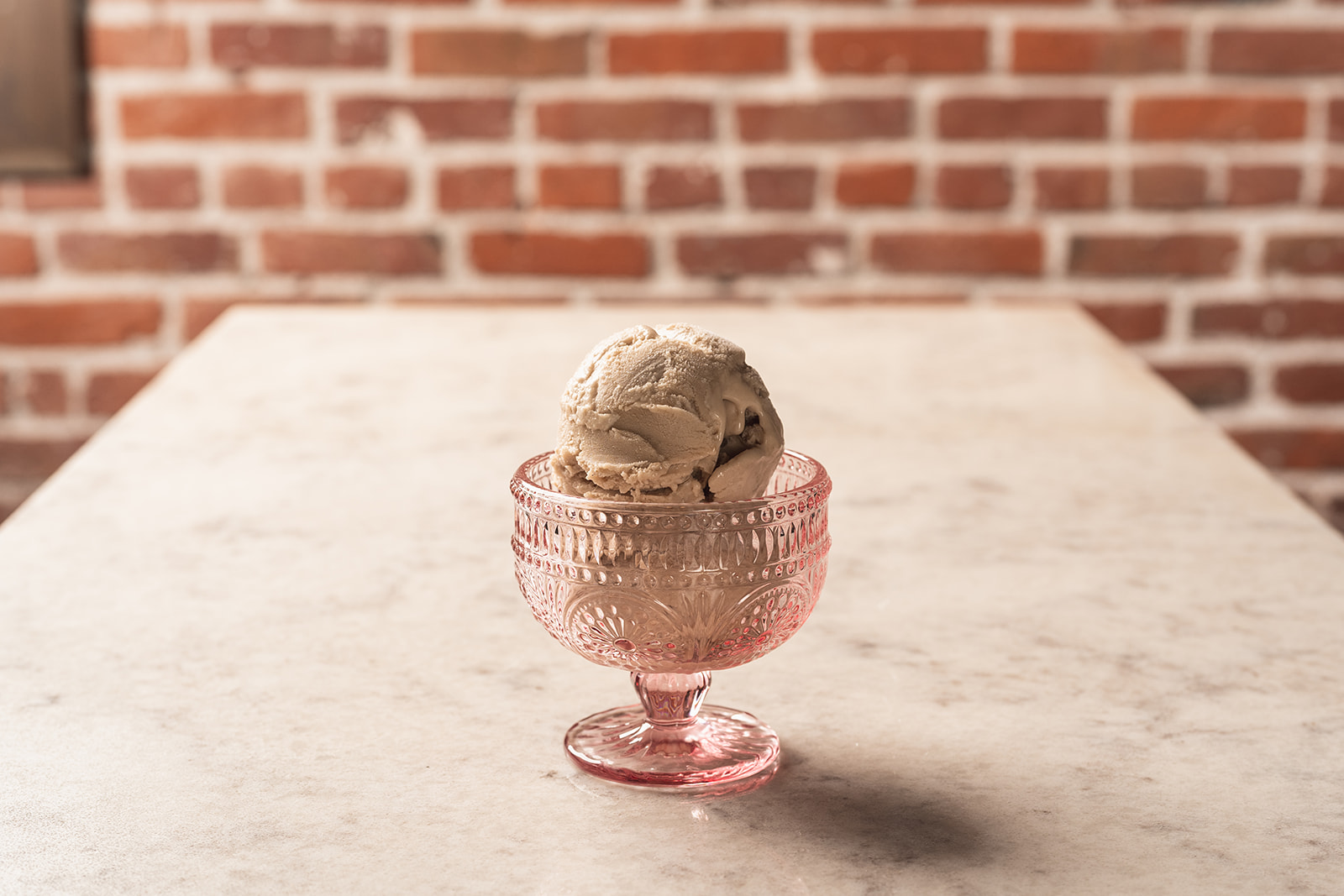
The kulolo ice cream at Fete combines locally-made poi, coconut milk and Coruba Jamaican darkish rum. Courtesy of Fete Hawaiʻi. Photograph by Sean Marrs.
Farmlovers Farmers Markets – There are numerous Hawaiʻi farmers markets promoting canoe crops. You will discover poi, ʻulu (when in season), maiʻa, contemporary niu and lots of extra native delights each week at farmers markets throughout the island. The Kakaʻako Farmers Market was voted #three Finest Farmers Market within the US by USA Right now.
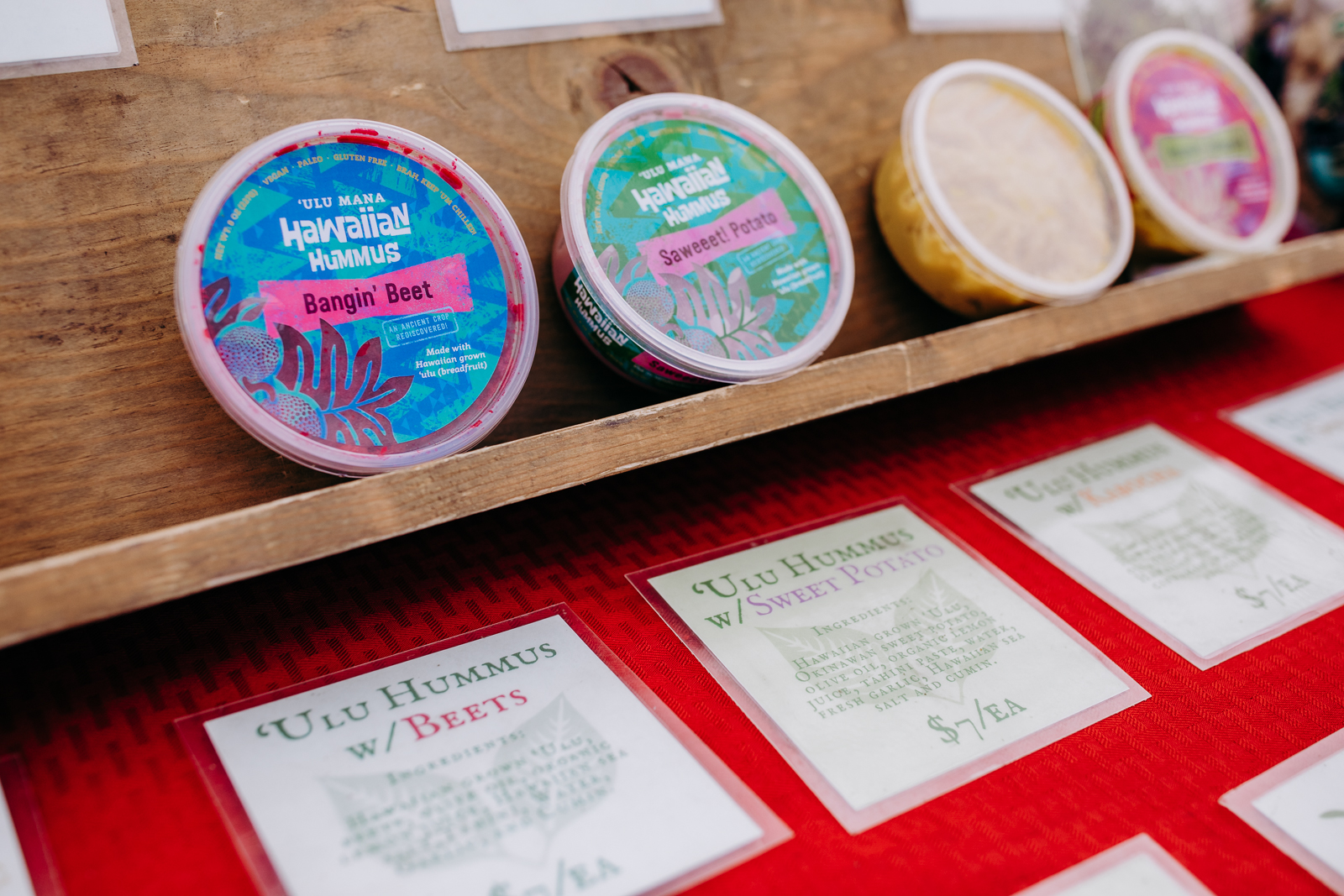
Discover merchandise made with Hawaiian canoe crops, like ʻulu hummus, at Farmlovers Farmers Markets on Oʻahu. Photograph by Ketino Images.
Hawaiʻi Island
Imu Mea ʻAi – Be a part of proprietor Iopa Maunakea as he leads visitors via an immersive Hawaiian cultural experience. Youʻll assist construct an imu (underground oven), harvest plant supplies and put together dishes for a conventional Hawaiian meals lūʻau. Maunakea additionally leads visitors via chanting and Hawaiian protocol and shares historical knowledge and moʻolelo (tales) as you’re employed and feast.
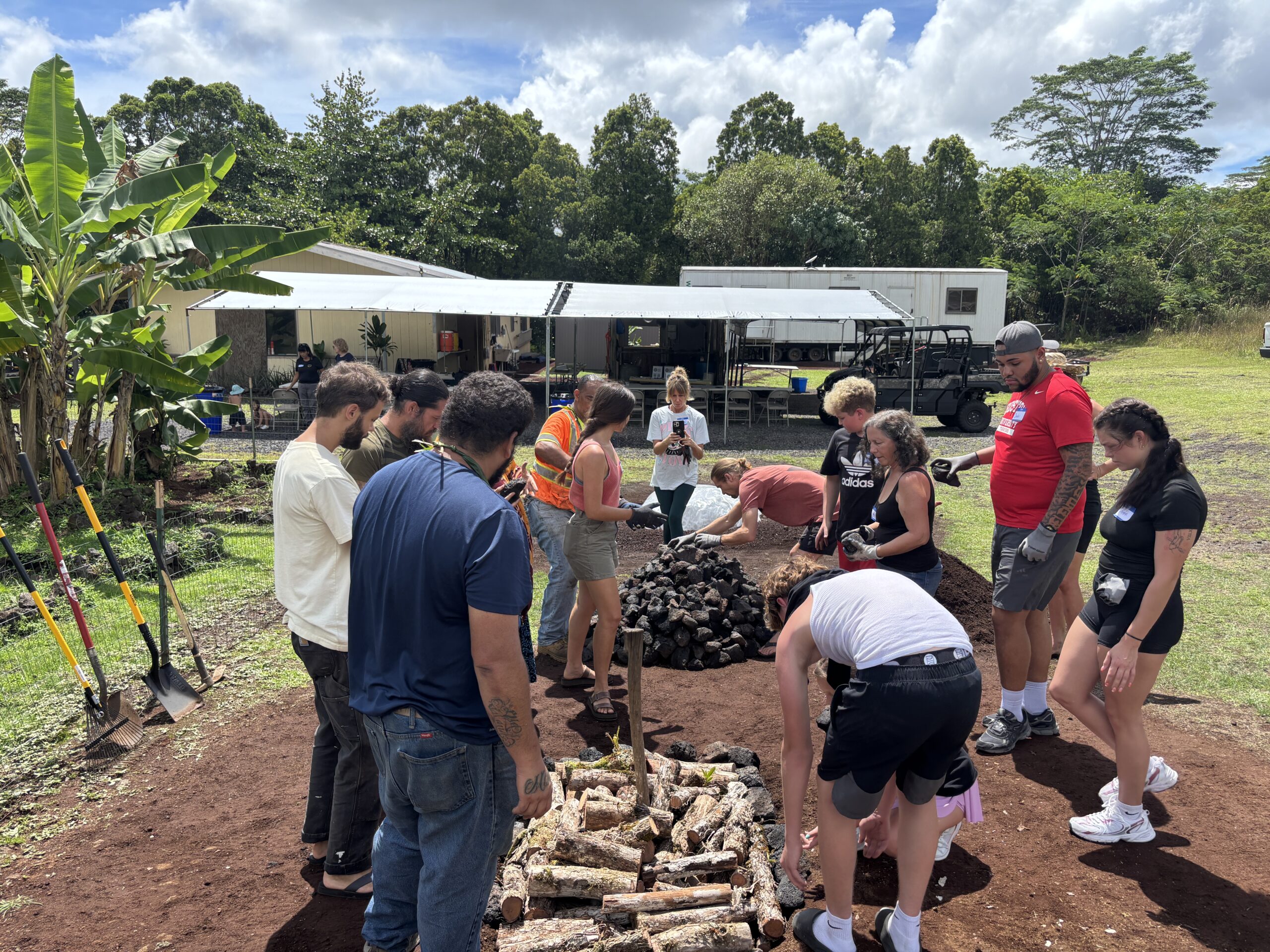
Visitors can learn to make a conventional imu through the Imu Mea ʻAi Meals Tour on Hawaiʻi Island. Photograph courtesy of Imu Mea ʻAi.
The Locavore Retailer – For over 11 years, The Locavore Retailer has been the place in Hilo to search out nearly every thing locally-grown on Hawaiʻi Island beneath one roof. You’ll discover kalo, ‘uala, ‘ulu, mai’a and way more (their choice is tremendous spectacular). Along with edible items, the shop additionally carries native skincare, attire and items. What’s nice for guests is you may also buy merchandise from the shop online.
Moon & Turtle – Chef and co-owner Mark Pomanski prepares Hawai‘i-Pacific dishes which are concurrently elevated and humble at this beloved Hilo restaurant. Native components, particularly contemporary seafood, drive the ever-evolving menu. You by no means know what Pomanski might be serving subsequent, simply put together to be shocked and delighted.
___________________________________________________________________________
The place Will You Go To Eat Actual Hawaiian Meals?
Now that you already know extra about Hawaiian canoe crops and the place to style them, all that’s left is to go eat!
Studying about Hawaiian tradition via meals will make your trip significant and unforgettable. With choices on a number of islands, together with this information, you will discover actual Hawaiian meals for a extra genuine expertise.
Pleased consuming!

